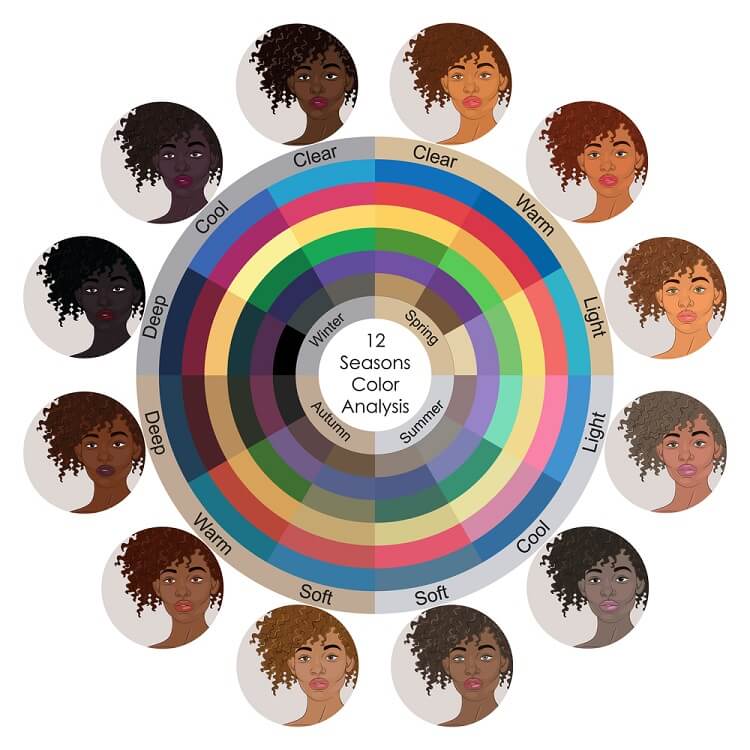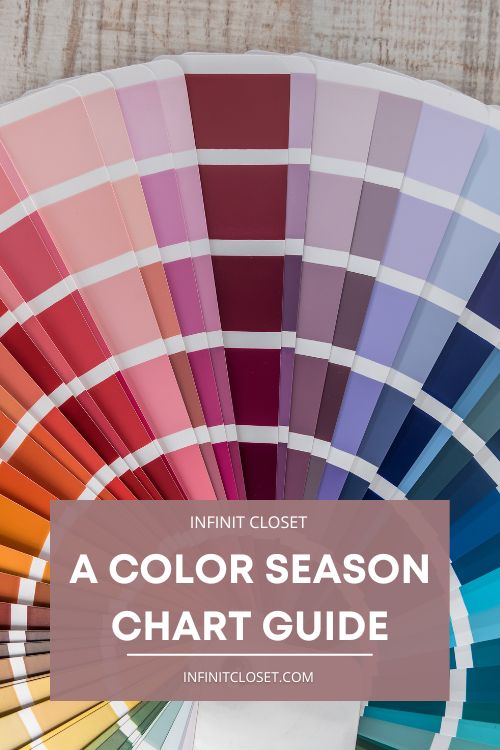Have you mistakenly worn the wrong-colored outfit for an event? Many of us have fallen victim to not understanding the color season chart. Every season has various colors that suit people based on their skin, hair, and eye tones. If you cannot blend the seasonal color palette, you may come out looking off.
As a result, many people use the color season chart to dress for every season. In addition, the chart mimics the individuals’ colors that fall into each season. To understand how this color palette can work, we first have to talk about the three color dimensions.
The Three Color Dimensions
Here is what you should know:
Hue
The temperature or hue scale explains how cool or warm a color will look on you. For instance, adding more yellow to a specific color will create a warmer color. On the other hand, you get a cooler color when you add more blue.
In other words, the cool or warm undertones can tell whether you fit a warm, cool, or neutral color.
Chroma
With a chroma scale, you can understand how muted, clear, saturated, or bright a color can look on you. If you want pure colors, you should consider clear colors. On the other hand, you can get a more muted color when you add more gray.
Value & Contrast
With the value scale, you can learn about the tone of the color in terms of lightness or darkness. Adding more black to a specific color can make it darker while adding more white can make a color lighter.
The color that suits an individual depends on the contrast between the person’s features. However, the contrast level relates to value but has little to do with the three color aspects.
The Color Aspects
When you look at the color season chart, you will find the perfect color palette that can suit your natural features. We mentioned that we have three types of color dimensions, which include primary and secondary colors.
Thus, the primary color aspect depends on the following:
- Hue: warm or cool
- Value: light or dark
- Chrome: muted or bright
The trick is to find the extreme color version on the color dimension. The secondary aspect has a significant influence on your color selection, and it includes:
- Hue: neutral-warm or neutral-cool
- Chroma: medium-muted or medium-bright
The third aspect may not affect your color selection and can be chroma or value only.
How Do You Know Your Color Season?

The color season chart can help you find the perfect color to harmonize your appearance. This chart makes creating a customized color palette for your outings easier.
Though we separate these colors, they interconnect with others. Cool colors come as natural black, whereas warm colors are light. To avoid confusion, here is what you should understand:
- Spring: Warm color added to light color gives you bright color (light + warm = bright)
- Summer: Cool color added to light color offers muted color (light + cool = muted)
- Autumn: Warm color added to dark color gives muted color (dark + warm = muted)
- Winter: Cool color added to dark color offers a bright color (dark + cool = bright)
Step 1: Determine Your Undertones
Firstly, you must determine if your natural features blend with cool or warm undertones. You can use the colors of your skin, hair, and eyes, and people without hair can use their preferred wig color or natural hair color to achieve this process.
Step 2: Count Your Features
You should tally up your cool and warm natural features. For instance, if you have cool skin and warm eyes and hair, you have one cool feature and two warm features. Therefore, you can lean towards the following as a guide:
- Cool Features: One warm feature and two cool features
- Warm Features: One cool feature and two warm features
- Completely Warm Features: Three warm features
- Completely Cool Features: Three cool features
However, people with neutral skin, one cool feature, and one warm feature should take an additional step. They can check if they have cool or warm skin characteristics or consider the opinions of loved ones and friends to come to a conclusion.
Step 3: Decide on Your Seasonal Color Palette
Using the information you now know, you can find your specific season color using the color season chart. Note that redheads may not need these rules and can instead use the warm spring and autumn color palettes.
Step 4: Analyze Your Color Palette
When you look at the color season chart, you will find six color families, which include the following:
- Soft
- Light
- Warm
- Cool
- Clear
- Deep
Moreover, each color family has two sister seasons that typically share colors. Take Warm Autumn, for instance. Belonging to the warm family makes Warm Spring a sister season. Individuals with a Warm Autumn palette can choose colors from either Warm Autumn or Warm Spring, as a result. We recommend that you experiment with these colors to find the best fit.
Due to the color contrast value, people can look good when they wear many colors together. This means that people with high color contrast can blend many colors, while those with low color contrast can opt for a monochromatic look in different shades, tones, and tints.
Conclusion
You should understand the color season chart if you wish to dress well according to your hair, eyes, and skin color. With the number of color palettes on this chart, it becomes easier to identify your primary and secondary color aspects to help you make the proper color selection.
As a result, you can handle your overall appearance, makeup, and style. However, some seasons may be more challenging to pinpoint than others. So, you can seek a second opinion if you struggle with your color season.


